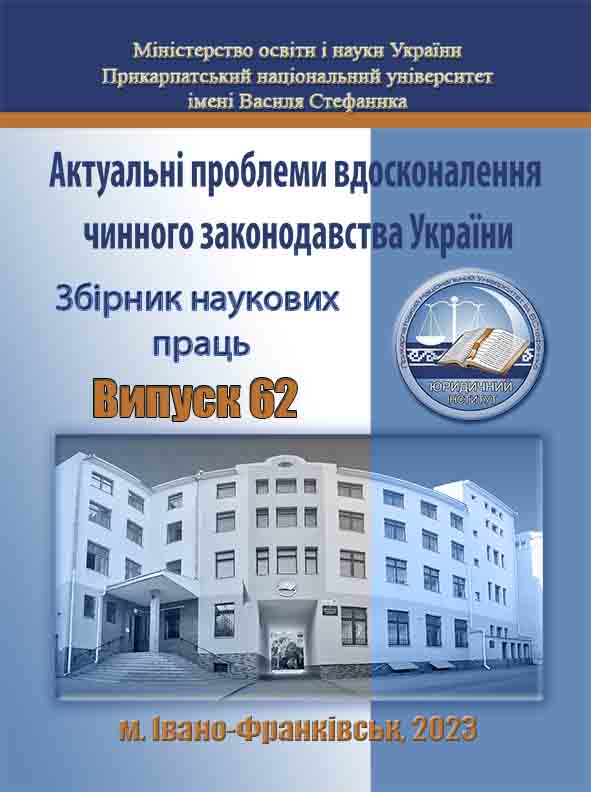About civil legal relations in the context of the complication of legal relations in their structure
DOI:
https://doi.org/10.15330/apiclu.62.2.37-2.45Keywords:
civil legal relations, objects of civil legal relations, legal relationship, legal nature, corporate legal relations, subjective civil rights and obligations, corporate legal relations, legal facts.Abstract
The scientific article examines the role of legal ties in the analysis of civil legal relations. Emphasis is placed on the expediency of distinguishing central and auxiliary legal ties. According to the authors, the specified division is necessary in those legal relationships where connections of different legal natures are combined. It is argued that if this division is not implemented, it may be difficult to determine the institution of private law that will regulate a specific legal relationship.
The position is expressed that the issue of central and subsidiary legal relations is followed in corporate legal relations. The outlined conclusion is made on the basis of the fact that these legal relations combine relations of different legal nature, in particular: binding, property, corporate. However, it is argued that in corporate legal relations, the connection of a corporate nature plays a key role. Of course, the importance of other legal relationships is not denied, however, it is noted that they should be understood through the prism of corporate law.
The authors of the article agree that the example of «intersection» of legal ties of different legal nature is followed when studying the norm of civil law as an object of civil legal relations. The authors are in solidarity with the scientific opinion that at the stage of creating a legal norm, the authors of the draft law are granted copyright. However, after the publication of the law, the rule of law acts as information, and accordingly, is the object of information law.Based on this, it was concluded that the norm of civil law simultaneously combines the characteristics of the object of intellectual property law and information.
Attention is drawn to the fact that digital things, such as: virtual assets and digital content, also contain legal ties of different legal nature. In addition, it is assumed that in the digital environment it is possible to predict the appearance of other objects with a complex legal nature, which will clearly be reflected in the features of the civil legal relationship with such objects.
A conclusion was made about the further expediency of developing doctrinal approaches in the direction of researching complex legal relationships that have a different legal nature with the centering of the main legal relationship and additional ones that are characteristic of a specific civil legal relationship. The outlined approach, according to the authors, will be useful when searching for an institution of civil law that regulates relevant relations.


